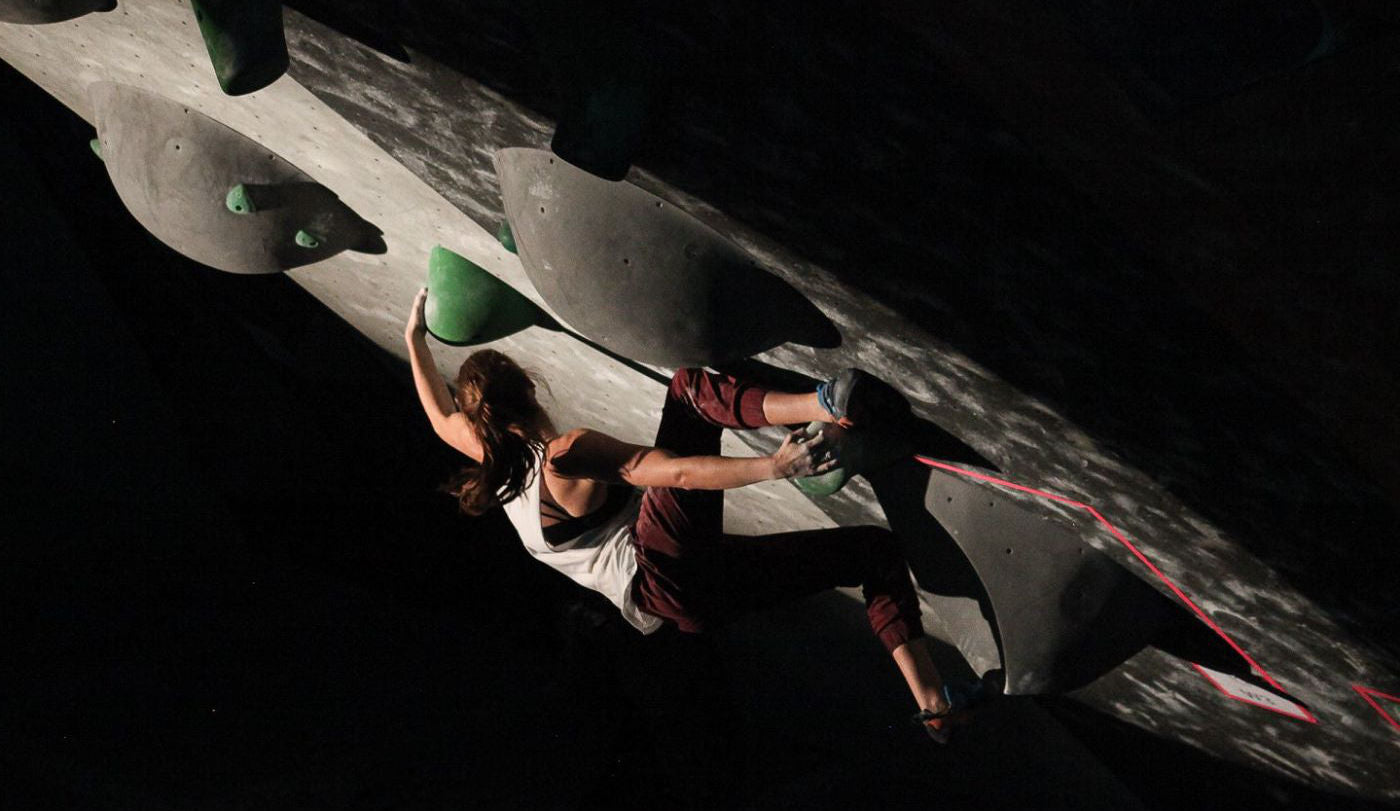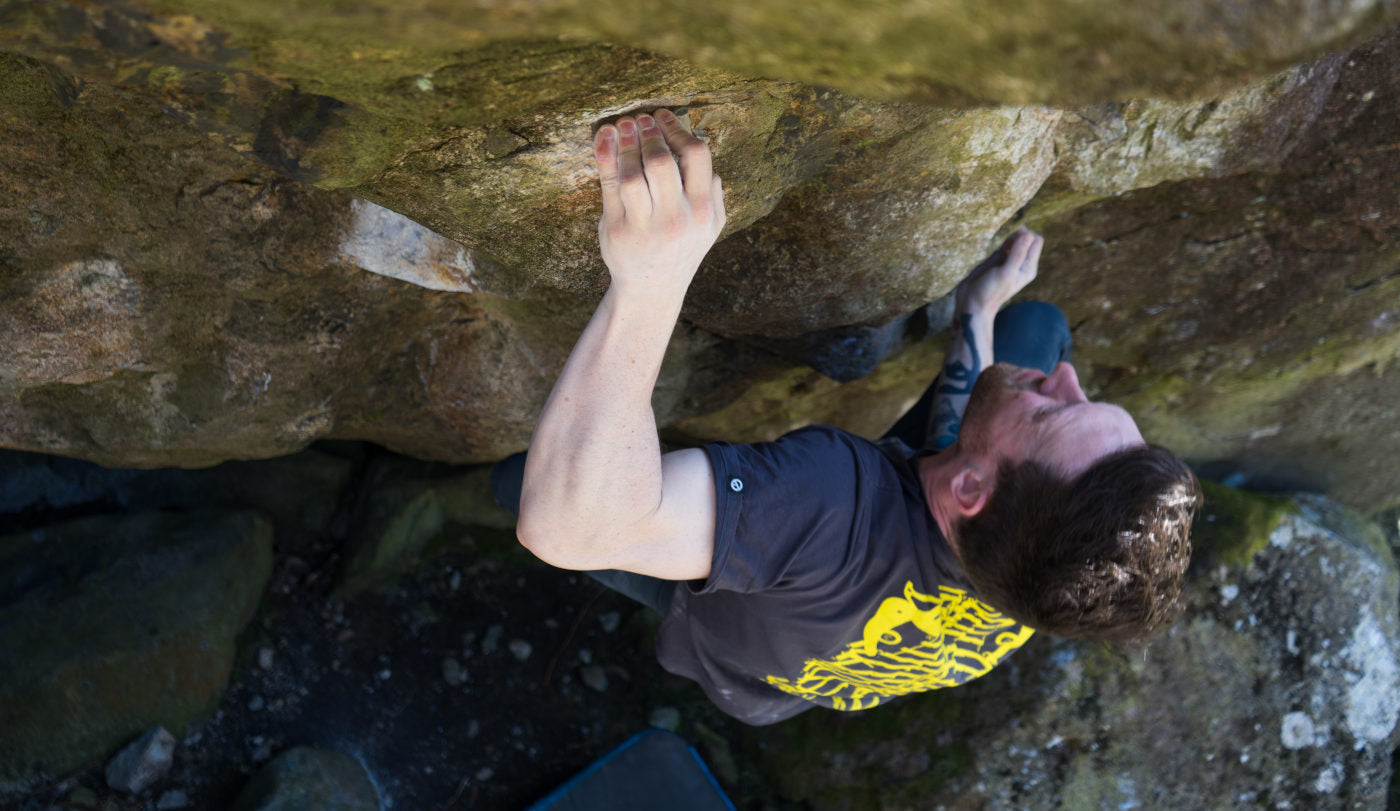By Tom Newberry
Many a New Year brings new goals. Along with these new aspirations comes the intention to lock yourself into a new structured schedule. Yet come the end of January, work, family or boredom have deviously interrupted the pristine training schedule you proudly created, putting an end to that Sharma spirit you started out with. However, do not despair! This article aims to provide you with a range of simple, fun and effective session ideas for down the wall. Each provides a focus to your training, resulting in greater gains than ‘just climbing’, without being unaccommodating. So just pick a session and give it a go…
STRENGTH & POWER:
Points Mean Prizes
A concept pinched from the Hueco Rock Ranch Rodeo; this workout is good for measuring your base level. Try to do it at least once a month, keeping a record of progress. It will be easy towards the end of a setting cycle, when you have the problems wired. The session is geared towards bouldering although points can be converted across for routes. The climb’s V-grade is the point value but only your 6 highest scoring problems in one session count. For example, if you did V4, V6, V4, V4, V5, V5 you would score 28. You can have as many attempts as you like, but only a successful ascent will count towards your score. Test yourself and go for it, see what the highest score you can get is, then try to beat it next month.
- Rookie: 10 – 24 points
- Improver: 25 – 34 points
- Sender: 35 - 44 points
- Dark horse:45 – 59 points
- Pro: 60+ points If you wish to focus more on endurance an alternative version is to set a target, say 60 points. Then time how long it takes to gain that many points. Whether you do 30 V2s, 12 V5s or a mixture of grades it doesn’t matter.
Project Simulator
This session is great for gaining power whilst maintaining your endurance. After warming up, pick a project, any project! Make sure it’s hard enough that you know you’d have to work on it for at least one full session. Now, project the problem for 20 minutes, make sure you rest plenty, ~1 to 3 minutes between goes. Once the 20-minute round is up, you have 20 minutes to climb as many problems as possible; pick problems about 3 grades below that of your project. So, say you pick a V6 project as you know it will be challenging; work this for 20 minutes. Then climb as many V3s as possible for 20 minutes (aim for a minimum of 7 problems). Once the second 20 minutes is up, you have completed one round; aim to complete three rounds altogether (2 hours climbing in total). Your only rests will come be in between attempts on the project.Project, Pull, Push
 Similar to the last - Find a project at your limit that you haven’t yet succeeded on, preferably it would be something that isn’t your style, but is something you wouldn’t mind putting some time into. For 15 minutes, work the project. When the time is up, you have 5 minutes to do 25 push-ups and 10 pull-ups (you can mix up the exercises). Quit when the 5 minutes is up, even if you haven’t completed your target number of reps; this is one round. Aim for 6 rounds, so by the end, you will have put 90 minutes into your project and completed 150 push-ups and 30 pull-ups; great for conditioning your body. Although easier on a bouldering wall, it can be done with routes as well.
Similar to the last - Find a project at your limit that you haven’t yet succeeded on, preferably it would be something that isn’t your style, but is something you wouldn’t mind putting some time into. For 15 minutes, work the project. When the time is up, you have 5 minutes to do 25 push-ups and 10 pull-ups (you can mix up the exercises). Quit when the 5 minutes is up, even if you haven’t completed your target number of reps; this is one round. Aim for 6 rounds, so by the end, you will have put 90 minutes into your project and completed 150 push-ups and 30 pull-ups; great for conditioning your body. Although easier on a bouldering wall, it can be done with routes as well.
Hero Climbs
Choose an overhanging route or problem with reasonable holds. Grade doesn’t matter too much, as long as it’s below your limit; you should still be trying hard though! For each hand move, cut both feet intentionally. Try to replace them precisely and on the first attempt. Make the next hand move and repeat. Do this for every move on the route/problem. Make sure to keep your arms slightly bent and engage your core; don’t straight-arm anything. This is great if you don’t have much time as these drills tire your entire body quickly. Beginners should aim for 5 routes or 12 problems; advanced climbers aim for at least 8 routes or 20 problems.
ENDURANCE:
Route Intervals
Perform a series of difficult, 4 minute climbing burns with only 5 minutes rest between each climb. Take turns climbing with your partner for 4 minutes with a 1 minute transition period between each climb — always double-check both the belay device and knot with each changeover! Select routes within two full number grades of your onsight limit—for example, if you onsight 6c, then climb between 6a and 6b+. Use a stopwatch to stay on schedule – climbing exactly 4 minutes. Climb slowly, in order to mimic outdoor routes as much as possible. If you do finish the route with time to spare, immediately begin down-climbing until the 4 minutes is up. When you reach 4 minutes, lower to the ground, even if you’re not at the top, untie, and get ready to belay your partner on their climb. Aim for at least 6 climbs each, if you stay on schedule this will take 1 hour. Advanced climbers should go for at least 12x4 minute burns in. Remember, a bit of friendly competition goes along way!
Boulder Intervals
This session will work your power endurance to the MAX. The goal is to ascend 5 strenuous boulder problems in 5 minutes with minimal resting. Pick challenging problems (not too long though) that you can still do when you’re tired. Remember you only have 5 minutes to do 5 problems. Once the 5 minutes are up (regardless of whether you’ve sent 5 problems or not), stop and rest for 10 minutes. Aim to complete 5 to 8 rounds of these bouldering intervals. Ideally each round would take place on a different angled wall to give a well-rounded workout. I recommend adding a little competition by taking part in pairs/small groups and keeping score. Determine a winner of each round by adding up the V-grade points of the 5 problems completed.















